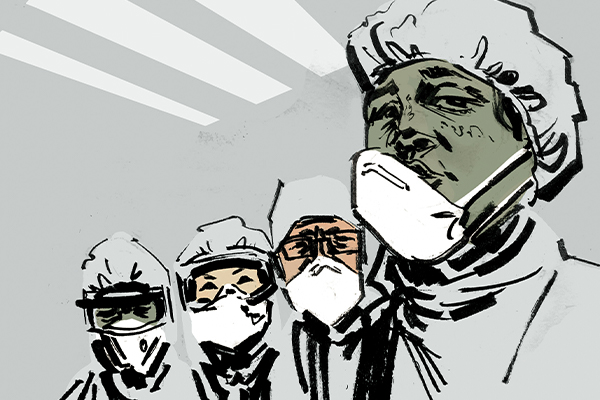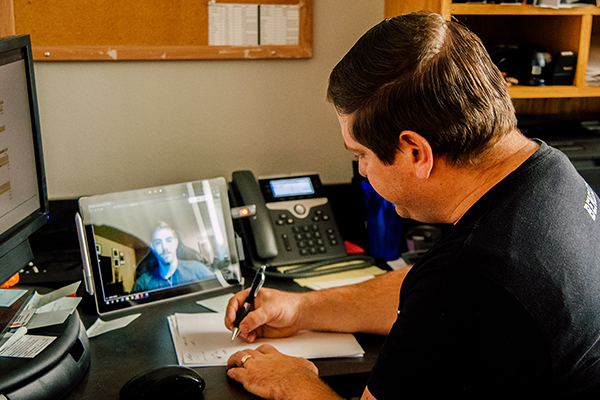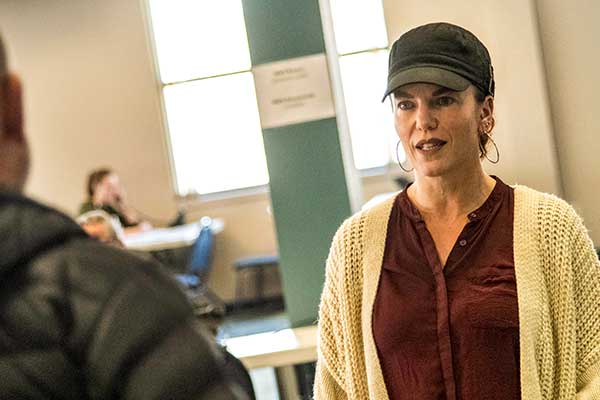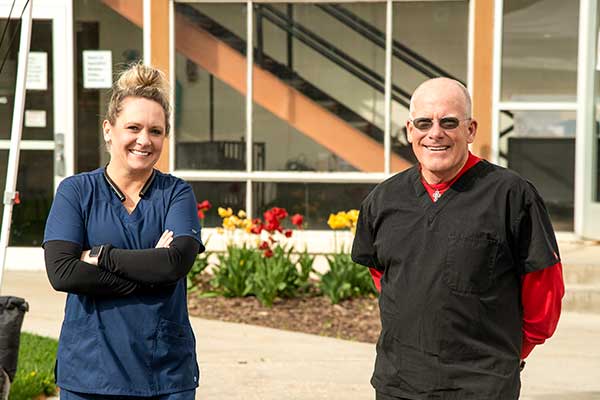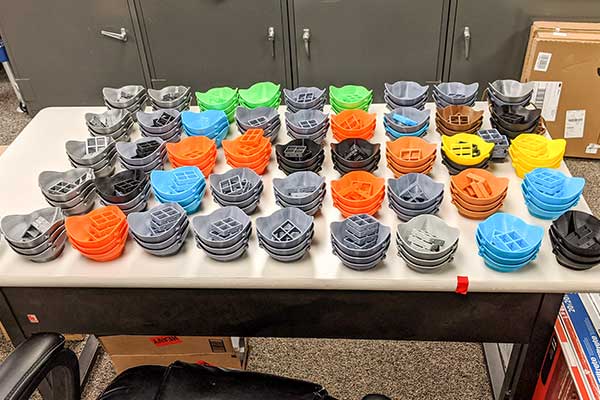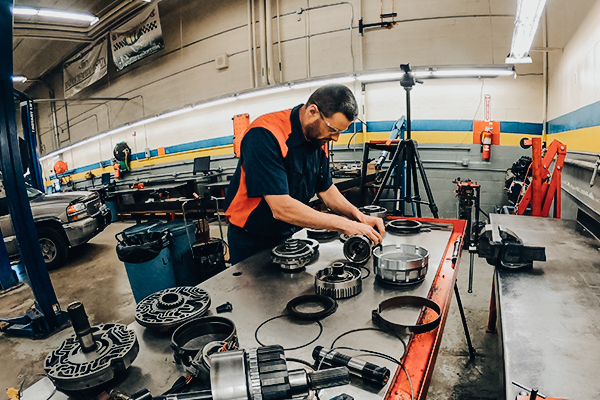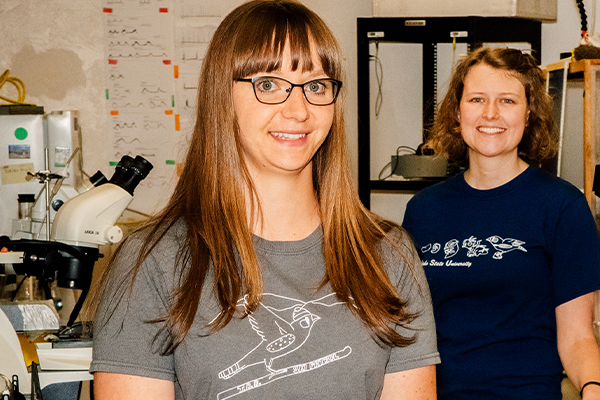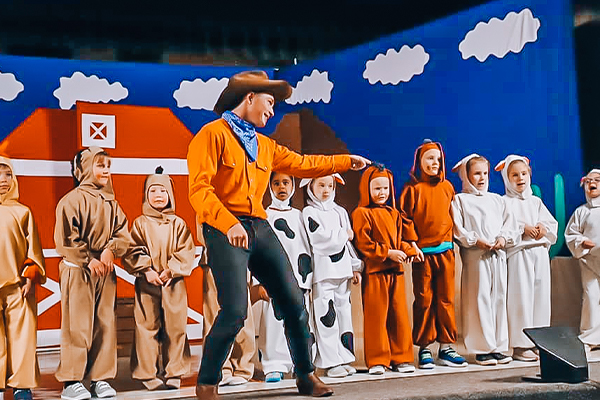Pandemic Prepared
Isu Alumna Tracy McCulloch Says COVID-19 Is What She Trained For
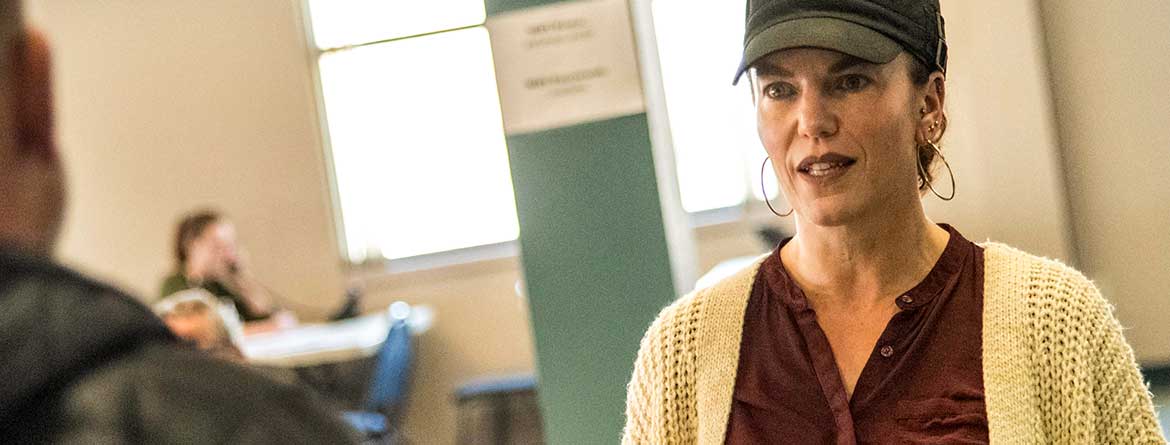
Covid-19 isn’t the first pandemic that Idaho State University alumna Tracy McCulloch has worked through at Southeastern Idaho Public Health where she now is the community health director and a public information officer.
“Covid-19 is something we’ve been preparing for since I started here in 2002,” said McCulloch, who began at SIPH as an intern and then worked as a health educator prior to stepping into her current roles. “I’m very thankful for everything we had planned for and talked about and all the partnerships we’ve developed over the years. It has all really paid off.”
With the latter part of her statement she could have been talking about either the H1N1 pandemic that hit in 2009 or Covid-19 that hit this year. Both required a massive effort and close coordination, but there are similarities and differences between these two dramatic public health events.
“With Covid-19 we expect the response for public health to continue,” said McCulloch, pointing out a similarity between this new crisis and H1N1. “So when we receive the vaccine in a year or so, we will then be conducting mass vaccination clinics. With those mass vaccination clinics we will again be partnering with community partners. So it will look similar to what we did 2009 in H1N1. The only way we were able to do those was with our community partners.”
SIPH will work with health care providers, fire departments, EMS and all the community partners to deliver the mass vaccination clinics.
“We know with COVID 19 that it will come in phases and so we will just continue to respond to it,” said McCulloch, who graduated from ISU with a bachelor’s degree in 2001 and earned a master’s degree in 2007, both in health education. “We are prepared for it and we know we are this for the long haul.”
SIMILARITIES/DIFFERENCES BETWEEN H1N1 and Covid-19
Because H1N1 was an influenza virus, a vaccine for it was developed quickly, so public health agencies like SIPH were able to vaccinate the public in a short time frame, she said. Also with HIN1, it did not affect the elderly population like seasonal flu did. Covid-19, on the other hand, is dramatically affecting the elderly population and has a mortality rate of about 15 percent for those over 80.
“Also, with Covid-19 it is very contagious,” McCulloch said. “So with H1N1 we did not have to put any of the guidance or Stay Home Orders into place that we’ve had to with Covid-19. With H1N1 it was the messaging we do with seasonal flu. With Covid-19 we had to put special guidelines and orders in place to prevent the spread.”
Those guidelines included wearing cloth face coverings, social distancing of six feet, limiting social gatherings, and limiting travel.
“The measures we have had to put in place to prevent the spread of Covid-19 have been different from H1N1. People having to stay home, and not connecting with others--the ones that they love--has really been trying,” she said. “We didn’t see that with H1N1. It also is affecting people’s mental health and we didn’t see that with H1N1. Covid-19 has really affected everybody’s life in one way or other and we didn’t see that with H1N1.”
There have been other unique aspects of dealing with the newest pandemic.
“With Covid-19, one of the biggest challenges we had is getting the supplies that we needed and, with Idaho being one of the last states to have cases, it has really limited getting the supplies to our area during this pandemic,” said McCulloch,
“That has been a big challenge,” she said in an interview in late April, “But again, we work in a community that always steps up to the plate, so we’ve had community members and community partners that have donated supplies to help health care providers and other community partners who were lacking the supplies.”
During the first two weeks of the pandemic she and her colleagues at SIPH worked long hours helping to manage the community’s response to the pandemic.
“We would leave the office at 6 or 7 o’clock and I’d go home and still work,” she said. “I am also a public information officer so I would be home responding to Facebook comments, responding to emails and so it would continue until I went to bed. So from when I would get up in the morning until I went to bed it was consistently Covid-19.”
That work pattern eventually settled down to a standard 8-1/2 to 9 hours a day, but the demands of the job continue to come in waves, depending on the information requested from the public and community partners. Besides her roles in emergency management, McCulloch also still has her regular duties that include programs in health promotion, public health promotion, epidemiology and SIPH’s home-visitation program.
With some of these programs SIPH had to halt a lot of the work it was doing. Before Covid-19 hit, for example, a lot of SIPH’s health promotion programs are required to do in-person education, to work with community partners, health care providers, the public and attend health fairs. The pandemic caused a lot of that to stop. SIPH had to be creative, doing a lot of virtual meetings, conference calls and phone calls, when it was possible. SIPH would email or mail paperwork and educational materials to clients to still meet their needs.
“With our public health preparedness program they are responding to Covid-19 and they continue to meet their deliverables and their required work,” she said. “And with our epidemiologists, the same thing. They are able to continue to do the work that they do and they are the ones that do the contact tracing for Covid19 cases.”
McCulloch, whose father Gary McCulloch is also an alumnus of ISU, said her education prepared her well for her job, including her efforts in battling pandemics.
“When I was in my undergraduate program and my grad program the professors I had were amazing and really pushed me to move forward and encouraged me and empowered me,” she said. “I just really appreciate all of them very much and thank them for really helping me get to where I am today.”

